Refine search
Actions for selected content:
3386670 results

Magnetoelectric Dipole Antennas
- Coming soon
-
- Expected online publication date:
- October 2025
- Print publication:
- 06 November 2025
-
- Book
- Export citation
Chapter 5 - Historicizing Cognition and the Arts
-
- Book:
- Cognition and the Arts
- Published online:
- 14 September 2025
- Print publication:
- 23 October 2025, pp 114-143
-
- Chapter
- Export citation
Appendix B: - List of Revolutions and Counterrevolutionary Outcomes
-
- Book:
- Return of Tyranny
- Published online:
- 17 September 2025
- Print publication:
- 23 October 2025, pp 251-256
-
- Chapter
- Export citation
Chapter One - “Larger, More Ornate, and More Seemly”
-
- Book:
- Wall Painting, Civic Ceremony, and Sacred Space in Early Renaissance Italy
- Published online:
- 19 September 2025
- Print publication:
- 23 October 2025, pp 15-81
-
- Chapter
- Export citation
Chapter Two - “A Most Devout Place”
-
- Book:
- Wall Painting, Civic Ceremony, and Sacred Space in Early Renaissance Italy
- Published online:
- 19 September 2025
- Print publication:
- 23 October 2025, pp 82-150
-
- Chapter
- Export citation
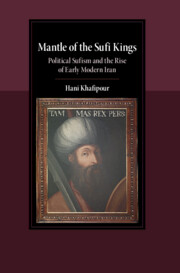
Mantle of the Sufi Kings
- Political Sufism and the Rise of Early Modern Iran
- Coming soon
-
- Expected online publication date:
- October 2025
- Print publication:
- 06 November 2025
-
- Book
- Export citation
Appendix A: - Sources for Counterrevolution Dataset
-
- Book:
- Return of Tyranny
- Published online:
- 17 September 2025
- Print publication:
- 23 October 2025, pp 249-250
-
- Chapter
- Export citation
1 - Introduction
-
- Book:
- Return of Tyranny
- Published online:
- 17 September 2025
- Print publication:
- 23 October 2025, pp 1-17
-
- Chapter
- Export citation
Contents
-
- Book:
- Return of Tyranny
- Published online:
- 17 September 2025
- Print publication:
- 23 October 2025, pp vii-x
-
- Chapter
- Export citation
Chapter Four - Rome in Spoleto
-
- Book:
- Wall Painting, Civic Ceremony, and Sacred Space in Early Renaissance Italy
- Published online:
- 19 September 2025
- Print publication:
- 23 October 2025, pp 234-297
-
- Chapter
- Export citation
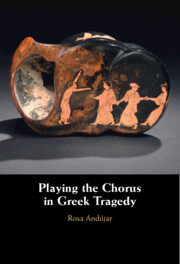
Playing the Chorus in Greek Tragedy
- Coming soon
-
- Expected online publication date:
- October 2025
- Print publication:
- 06 November 2025
-
- Book
- Export citation
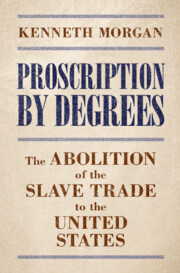
Proscription by Degrees
- The Abolition of the Slave Trade to the United States
- Coming soon
-
- Expected online publication date:
- October 2025
- Print publication:
- 06 November 2025
-
- Book
- Export citation

Insight-Driven Problem Solving
- Analytics Science to Improve the World
- Coming soon
-
- Expected online publication date:
- October 2025
- Print publication:
- 30 October 2025
-
- Book
- Export citation
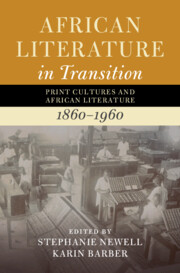
African Literature in Transition
- Print Cultures and African Literature, 1860–1960
- Coming soon
-
- Expected online publication date:
- October 2025
- Print publication:
- 06 November 2025
-
- Book
- Export citation
Chapter 2 - Embodiment and Cognitive Extension in Art and Music
-
- Book:
- Cognition and the Arts
- Published online:
- 14 September 2025
- Print publication:
- 23 October 2025, pp 31-63
-
- Chapter
- Export citation

Fundamentals of Astrophysics
- Coming soon
-
- Expected online publication date:
- October 2025
- Print publication:
- 24 July 2025
-
- Textbook
- Export citation
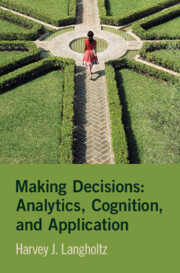
Making Decisions: Analytics, Cognition, and Application
- Coming soon
-
- Expected online publication date:
- October 2025
- Print publication:
- 06 November 2025
-
- Book
- Export citation
Figures
-
- Book:
- Cognition and the Arts
- Published online:
- 14 September 2025
- Print publication:
- 23 October 2025, pp ix-x
-
- Chapter
- Export citation
Appendix III - Will of Filippo de’ Medici
-
- Book:
- Wall Painting, Civic Ceremony, and Sacred Space in Early Renaissance Italy
- Published online:
- 19 September 2025
- Print publication:
- 23 October 2025, pp 369-374
-
- Chapter
- Export citation

Big Data in the Psychological Sciences
- Coming soon
-
- Expected online publication date:
- October 2025
- Print publication:
- 23 October 2025
-
- Textbook
- Export citation
